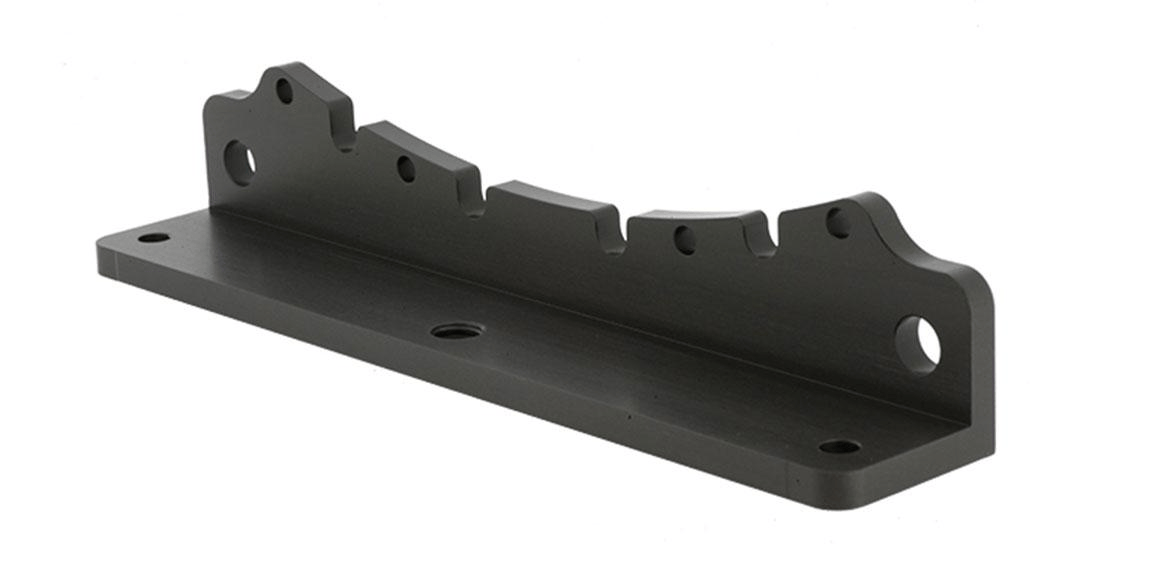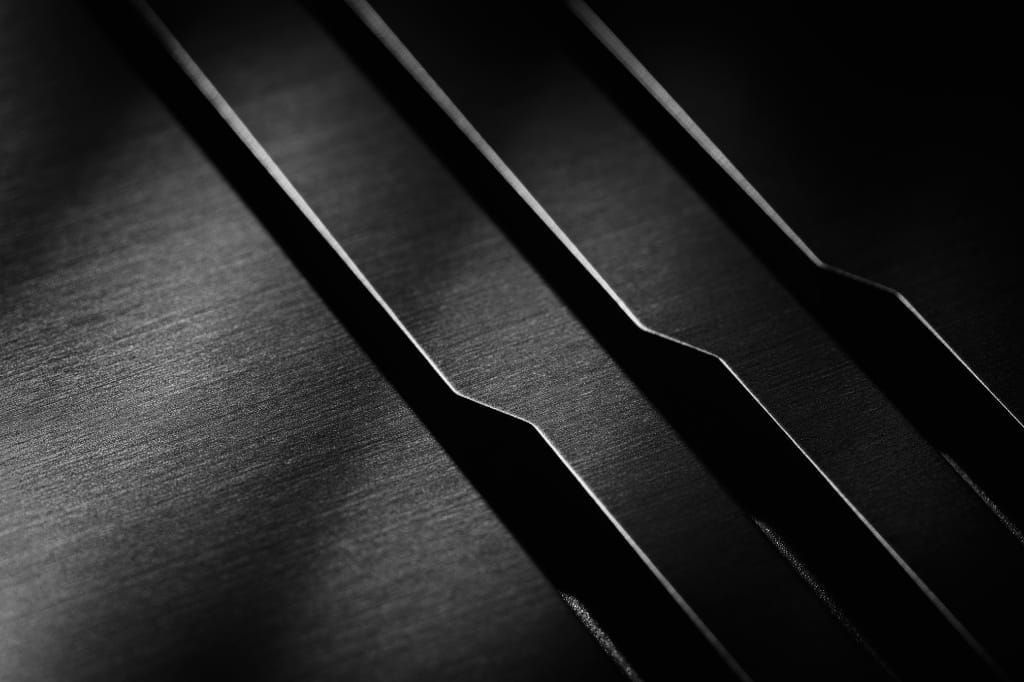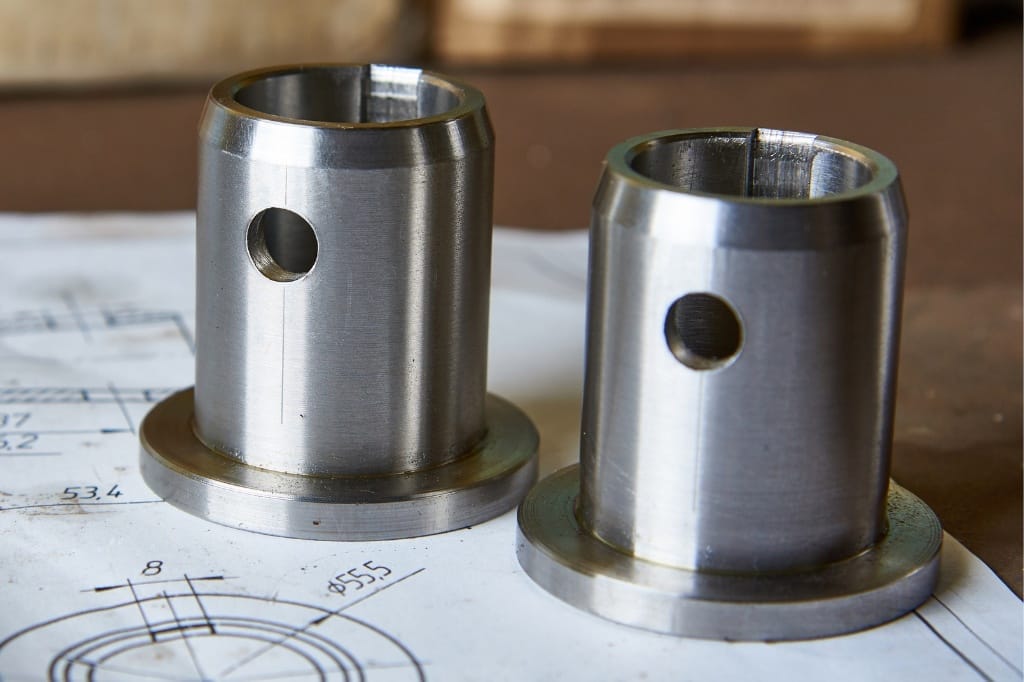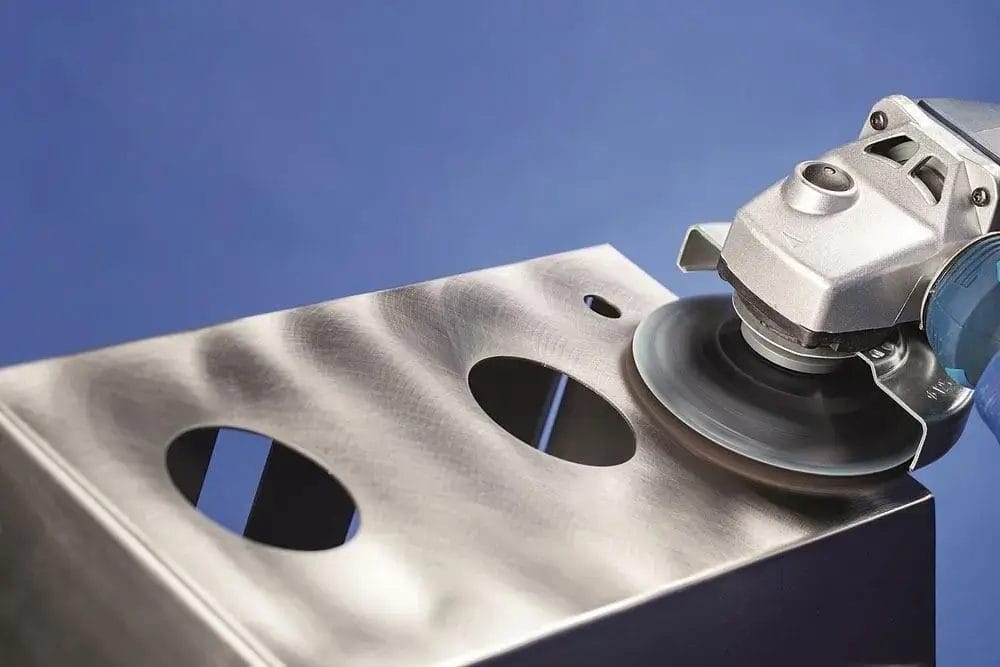Do you need to make metal parts tougher with hard coat anodize? This isn’t just regular anodizing, it’s better. We use cold acid baths, and electric current flows through the aluminum.
A thick oxide forms, and this part gets super hard. You can’t scratch it easily, and it won’t rust. Many factories need this coating, it’s often used for aerospace and medical industries. Yijin Hardware creates perfect anodized parts every time exactly for your needs.
Key Takeaways
- Hardcoat anodize creates oxide layers 13-150 μm thick with hardness values of 400-600 HV
- The anodizing process uses refrigerated sulfuric acid electrolyte (-2 °C to 0 °C) with high current densities (24–40 amps per square foot)
- Thickness increases occur with approximately 50% inward penetration and 50% outward growth
- Applications include aerospace, military, medical, and food processing industries requiring extreme durability
- MIL-A-8625, AMS 2469, ASTM B580, and ISO 10074 standards govern quality specifications and testing
What is Hard Coat Anodizing, and How does it Differ From Regular Anodizing?
Hard coat anodizing makes aluminum stronger. This type III anodize method forms a dense anodic coating of aluminum oxide. Regular anodize creates thinner layers. Type II anodize works at warmer temperatures. Hard anodized aluminum has better properties. The coating thickness makes a big difference.
Comparative Anodizing Specifications
| Feature | Type I (Chromic Acid Anodize) | Type II (Standard) | Type III (Hard Coat) |
|---|---|---|---|
| Thickness | 2.5 μm (0.0001″) | 5-25 μm (0.0002-0.001″) | 13-150 μm (0.0005-0.006″) |
| Hardness | 150-250 HV | 200-400 HV | 400-600 HV |
| Primary use | Corrosion protection | Decorative/moderate protection | High wear/corrosion resistance |
| Electrolyte | Chromic acid | Sulfuric acid | Sulfuric acid (cold) |
| Color options | Limited | Extensive | Limited (often black) |
| Governing specs | MIL-A-8625 Type I | MIL-A-8625 Type II | MIL-A-8625 Type III |
The distinctive characteristics include:
- Surface hardness approaching tool steel
- Superior abrasion resistance for sliding components
- Enhanced corrosion resistance in harsh environments
- Electrical insulation properties for electronic applications
How does the Hard Coat Anodizing Process Work?
How to hard coat anodize aluminum involves an electrochemical process using sulfuric acid solution maintained at near-freezing temperatures. The aluminum part serves as the anode in an electrical circuit, where a positive electrode creates a crystalline oxide layer on the surface of the parts. This precisely controlled coating process requires specific parameters to achieve optimal surface coating properties.
Technical Process Parameters
- Electrolyte composition: 180-200 g/L sulfuric acid anodize bath
- Temperature: -2 °C to 0 °C (controlled by industrial chillers)
- Current density: 24–40 amps per square foot (ASF)
- Voltage range: 60-100 V DC (increasing as coating builds)
- Process duration: Determined by required thickness of the layer
- Agitation: Continuous to maintain uniform coating quality
Critical Process Steps
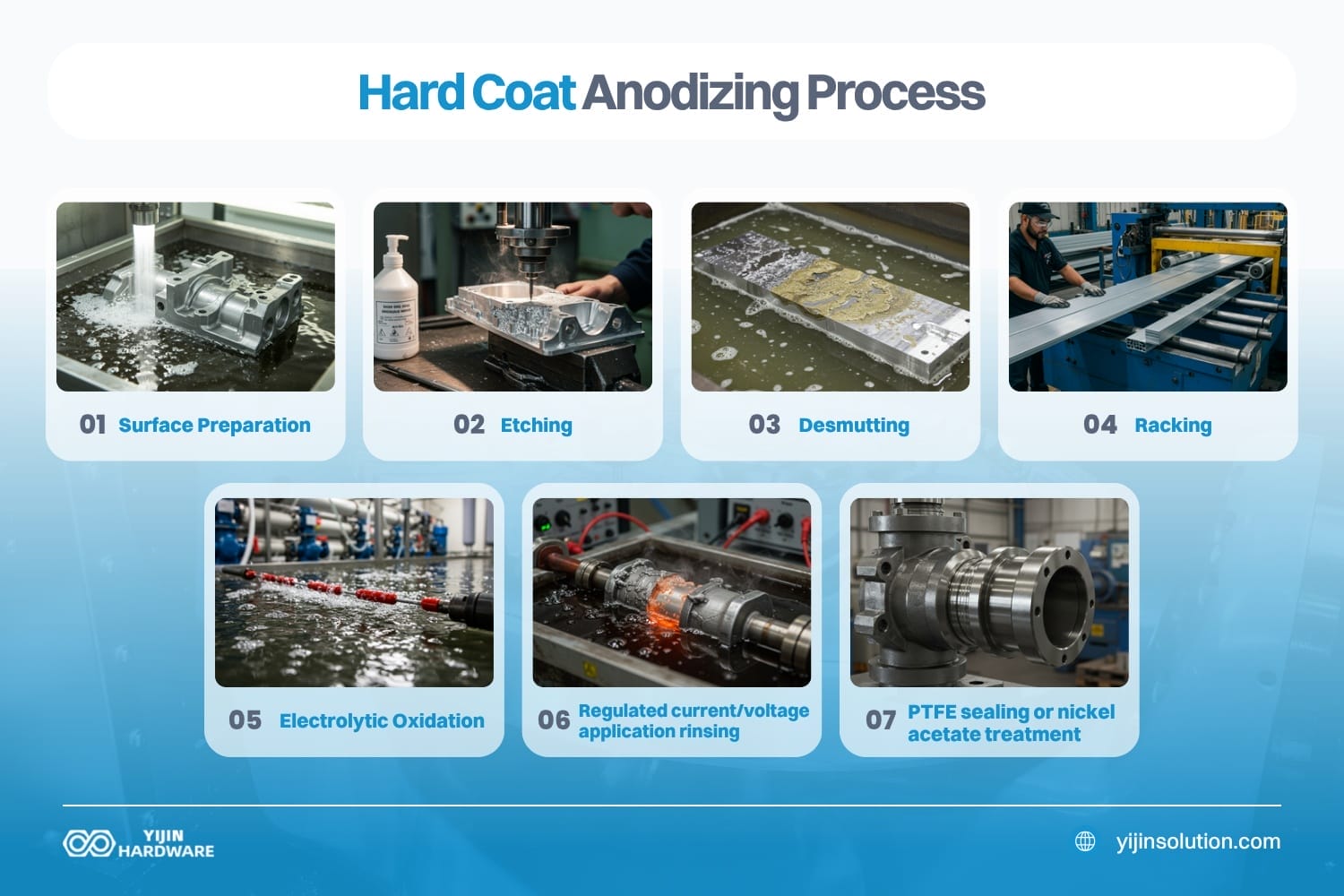
- Surface preparation (alkaline cleaning, degreasing)
- Etching to remove natural oxide layer on the surface
- Desmutting to remove residual intermetallics
- Racking with appropriate electrical contact points
- Electrolytic oxidation in refrigerated tank
- Regulated current/voltage application
- Thorough rinsing in deionized water
- Optional PTFE sealing or nickel acetate treatment
- Final quality inspection and testing
What Performance Benefits does Hard Coat Anodizing Provide?
Hard coat anodizing aluminum delivers exceptional hardness (400-600 HV), making aluminum surfaces comparable to hardened steel for wear and corrosion resistance. The Taber Abraser test (per Fed Std 141 and EN ISO 8251) demonstrates minimal weight loss compared to untreated aluminum alloy or Type II anodize coatings. Data Insights Market notes that the worldwide hard-coated anodized aluminum market was around $2.5 billion in 2025 and is expected to grow at a CAGR of 7% from 2025 to 2033.
The American Anodizing Council confirms that properly processed Type III coatings provide superior environmental protection.
Advanced Performance Characteristics
| Performance Attribute | Hard Coat Anodizing Value | Testing Method |
|---|---|---|
| Hardness | 400-600 HV | ASTM E384, EN ISO 4516 |
| Corrosion resistance | Salt spray resistance | ASTM B117, EN ISO 9227 |
| Electrical insulation | >10,000 MΩ surface resistivity | EN 12373-17, ISO 2376 |
| Thermal emissivity | Up to 0.8 | Specified radiometric testing |
| Dielectric strength | 500-3,000 V (thickness dependent) | ASTM D149 |
Enhanced Surface Properties
- Exceptional abrasion resistance for sliding mechanisms
- Improved ability to retain lubricants for moving parts
- Reduced friction coefficients
- Non-magnetic characteristics
- Non-contaminating, sterilizable anodized surface
Which Aluminum Alloys Work Best With Hard Coat Anodizing?
Aluminum alloy selection significantly impacts hard-anodized aluminum results, with 6000-series alloys consistently producing the highest quality coatings. The 6061-T6 alloy achieves excellent hardness and uniform coating development according to the Aluminum Association guidelines. Boeing’s BAC 5821C standard specifically recognizes certain alloys for aerospace aluminum anodizing applications.
Alloy-Specific Anodizing Response
| Alloy Series | Hard Coat Performance | Coating Appearance | Hardness Potential |
|---|---|---|---|
| 6000 Series (6061, 6063) | Excellent | Uniform dark gray | 500-600 HV |
| 7000 Series (7075) | Very good | Gray to bronze | 450-550 HV |
| 5000 Series (5052) | Good | Consistent color | 400-500 HV |
| 2000 Series (2024) | Fair | Less consistent | 350-450 HV |
| Cast alloys (319, 356) | Limited | Inconsistent | 300-400 HV |
Alloy Composition Effects
- High copper content reduces maximum achievable hardness
- Silicon content affects color and consistency
- Zinc content influences coating appearance
- Magnesium improves corrosion protection
- Intermetallic compounds create potential weak spots
How does Hard Coat Anodizing Affect Component Dimensions?
Hard coat anodizing changes component dimensions through both penetration and buildup mechanisms. The aluminum oxide layer develops approximately 50% inward (penetration) and 50% outward (buildup) from the original aluminum surfaces. The American Society for Metals handbook confirms that for a 50 μm coating, dimensional changes of about 25 μm per surface should be expected.
Dimensional Planning Considerations
- Inside corners accumulate more thickness increases than flat surfaces
- Holes decrease in diameter by twice the penetration depth
- External dimensions increase by the buildup amount
- Deep recesses may receive thinner coatings
- High current density areas (edges, points) build faster
Critical Design Accommodations
- Machine parts undersized by half the expected coating thickness
- Specify appropriate dimensional tolerances on engineering drawings
- Identify critical interfaces requiring masking
- Consider post-anodizing machining for precision requirements
- Calculate thread modifications based on pitch diameter changes
What Industries Rely On Hard Coat Anodized Components?
Hard coat anodizing serves critical applications across numerous high-performance industries requiring exceptional durability. The National Aerospace and Defense Contractors Accreditation Program (NADCAP) specifically addresses anodization quality for aerospace components. Medical Device Regulation (MDR) recognizes anodized aluminum surfaces for biocompatibility in medical applications.
Industry-Specific Applications
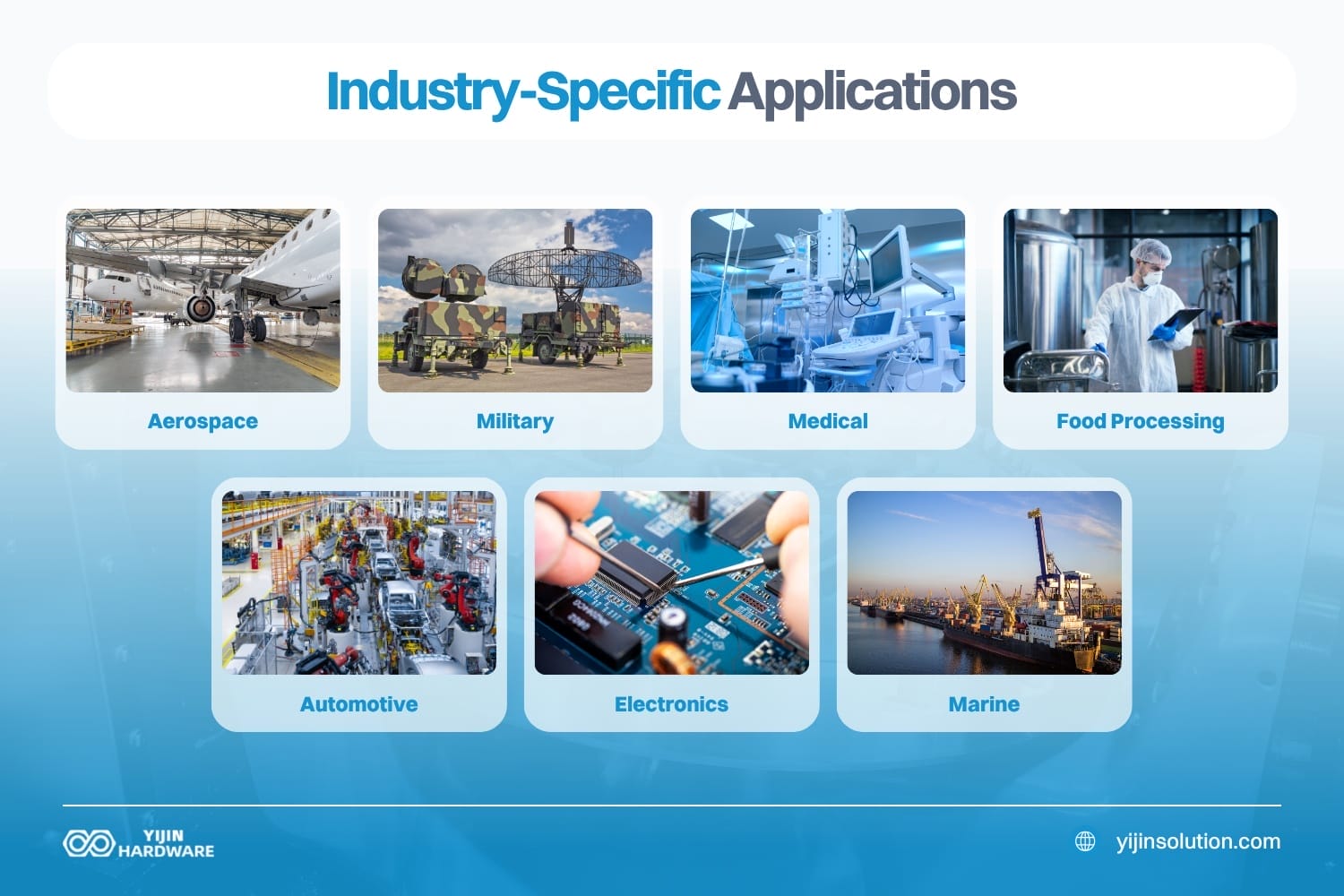
- Aerospace: Landing gear components, hydraulic actuators, structural elements
- Military: Weapon systems, optical housings, ruggedized equipment
- Medical: Surgical instruments, diagnostic devices, sterilizable equipment
- Food processing: Handling equipment, machinery components, FDA-compliant surfaces
- Automotive: Racing components, high-performance engine parts, brake systems
- Electronics: Heat sinks, chassis components, EMI/RFI shielding structures
- Marine: Saltwater-exposed components, propulsion systems, hardware
How does PTFE Sealing Enhance Hard Coat Anodizing?
PTFE sealing integrates polytetrafluoroethylene particles into the porous anodized layer, creating a self-lubricating surface with exceptional properties. This metal finishing process, governed by MIL-A-63576 and AMS 2482 specifications, infuses PTFE into the microstructure of the oxide. The resulting coat anodized surface achieves significantly lower friction coefficients while maintaining the core hardness benefits of the hard coat anodizing process.
PTFE Sealing Benefits
- Reduced friction coefficient (0.05-0.10 vs. 0.25-0.30 for standard hard coat)
- Enhanced release properties for non-stick applications
- Improved corrosion protection through pore seal methods
- Dry-film lubrication characteristics
- Excellent chemical resistance
Application Areas
- Sliding mechanisms and wear surfaces
- Food processing equipment requiring non-stick properties
- Components with limited lubrication access
- Parts operating in vacuum or extreme environments
- Applications requiring both hardness and reduced friction
How does CNC Machining Integrate With Hard Coat Anodizing?
CNC machining and aluminum hard coat anodizing integration requires precision planning for dimensional changes while offering significant quality advantages. Yijin Hardware’s Computer Numerical Control (CNC) systems coordinate with Computerized Process Control (CPC) anodizing to maintain tight tolerances throughout manufacturing. This integration prevents quality issues common when working with separate machining and finishing vendors.
Integrated Manufacturing Benefits
- Dimensional compensation programmed directly into CNC toolpaths
- Material selection optimized for both machinability and anodizing response
- Reduced handling and transportation damage between processes
- Comprehensive quality documentation from raw material through finishing
- Streamlined project management with single-source accountability
Critical Integration Points
- CAD/CAM programming with anodizing allowances
- Optimized surface finish preparation for anodizing adhesion
- Coordinated masking strategies for selective treatment
- Integrated quality inspection protocols
- Unified documentation and certification
How Should You Design Parts for Hard Coat Anodizing?
Designing for hard anodizing requires specific considerations to accommodate the electrochemical process requirements. The Society of Manufacturing Engineers recommends minimum radius specifications for interior corners to ensure uniform current distribution. Design guidelines from the American Society for Testing and Materials (ASTM) provide dimensional compensation formulas for precision anodized parts.
Design Best Practices
- Maintain uniform wall thicknesses to promote even current distribution
- Specify minimum 0.5 mm radius on interior corners
- Include drainage holes for complex geometries
- Design with 0.025-0.050 mm clearance per surface for mating parts
- Avoid sharp edges that concentrate current density
- Consider Finite Element Analysis (FEA) for critical tolerance components
Masking Considerations
- Identify precision surfaces requiring dimensional protection
- Design appropriate masking attachment points
- Consider conformal masks for complex geometries
- Plan for thread or hole protection requirements
- Evaluate selective anodizing needs for electrical contacts
Why Choose Yijin Hardware for Hard Coat Anodizing Services?
Yijin Hardware delivers superior Type III aluminum anodizing through integrated CNC machining and advanced process control systems. Our comprehensive manufacturing approach ensures precise dimensional control throughout production. We provide complete documentation packages with coating thickness measurements, hardness testing results, and compliance certifications for Class 1 undyed or dyed specifications.
Our technical capabilities include specialized masking for selective anodizing, precision thickness control through computerized rectification, and advanced range of anodizing services including PTFE impregnation options for self-lubricating surfaces. Contact our engineering team today to discuss your hard coat anodizing requirements and discover how our integrated manufacturing approach can enhance your component quality while simplifying your supply chain.
FAQs About Hard Coat Anodizing
How does hard coat anodizing compare to hard chrome plating?
Hard coat anodizing integrates with the aluminum substrate while chrome plating adds a separate metal layer. The anodic process creates no hydrogen embrittlement and poses fewer environmental concerns than hexavalent chromic treatments. Hard chrome has slightly higher hardness (850-1000 HV versus 400-600 HV for hard coat), but anodizing provides better adhesion and corrosion protection specifically for aluminum.
What environmental advances exist in hard coat anodizing?
Modern hard coat anodizing facilities implement closed-loop water recycling systems and acid recovery technologies. The Environmental Protection Agency recognizes anodizing as more environmentally responsible than many competitive metal finishing processes due to its non-toxic waste streams. Recent developments include energy-efficient rectifiers and sulfuric acid recycling systems that increase the surface treatment efficiency.
Can hard coat anodized parts be repaired if damaged?
Hard anodized layers cannot be effectively repaired once damaged without complete stripping and reprocessing. The oxide becomes an integral part of the aluminum substrate, making spot repairs impossible without creating visible transitions. For components with minor damage, PTFE-based dry lubricant coatings can sometimes restore functional properties, but aesthetic damage requires complete reprocessing.
Back to Top: Hard Coat Anodized Aluminum | Full Guide


